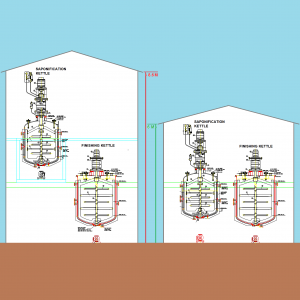 One of the biggest problems with putting a grease plant into a light industrial unit is the amount of headroom available.
One of the biggest problems with putting a grease plant into a light industrial unit is the amount of headroom available.
Historically, run major companies fitted grease manufacturing plants in buildings of up to 12 metres in height. This was due to earlier plants often using a gravity feed from the saponification vessel to the finishing kettle. Furthermore, the vessels were generally taller and thinner.
We have successfully installed plants on three occasions in buildings with significantly lower roof heights, based on a three-tonne saponification kettle and one or two five-tonne finishing kettles. The vessels sit side by side and the product and a pump transfers the product, rather than gravity. In theory, this plant would fit into an industrial unit with an eaves height of 6 Metres.
Local industrial buildings have eaves heights ranging from 3.3 M to 6.3 M, meaning that only one building has the height to take this size of process vessels. So, what else can be done to reduce the headroom needed?
- Minimise the height of the agitation drive system
- Use Atmospheric Vessels, instead of Pressure Vessels where possible
- Lower the outlet to as close to the floor as possible
- Keep the vessel aspect ratio low, which also helps reduce foaming
